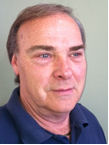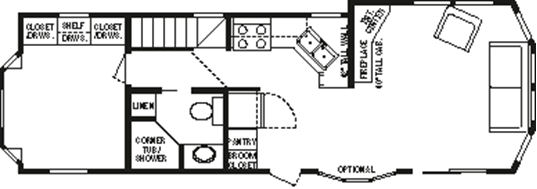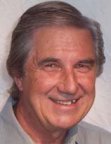
|
|
 |
| By Jeff Coy, ISHC April 18, 2012 “When they piled on the requirements, I realized the cost of bringing utilities into my site would jeopardize the financial stability of the whole project,” exclaimed Carey DePalma, a Realtor and resort developer. “That’s when inspiration hit me. Now we’re off the electrical grid, self-contained and require no infrastructure. Now you can live anywhere, deep in the woods if you want, energy free.”
 Here’s where the problem transformed into a solution --- a
green solution, at that. And Carey DePalma
entered a whole new business. Here’s where the problem transformed into a solution --- a
green solution, at that. And Carey DePalma
entered a whole new business. He started talking to manufacturers about park models, you know, the rental cabins you find in RV parks and campgrounds. He started talking to solar companies. He inquired about drinking water filtration systems and cleaning grey water. He uncovered the secrets to heating and cooling a lodging unit for year round use. Carey pulled all the pieces together to produce a new park model or, as he calls it, a wilderness cabin or lodge. He created a portable energy pack, which he called The Caboose because it fits at the end of the unit. Manufactured Homes, Cabins & Lodges
Carey contracted with two manufacturers, one in Indiana, the other in Texas, to build the modified park models now being marketed as Wilderness Cabins & Lodges. You can order one in lengths of 26, 28 or 32 feet. Add 2 feet of breathing space along the I-beam and then add the 6-foot Caboose Energy Pack where the utility package is housed. You can order a 12-foot Caboose if you need extra storage, but you have to decide up front when you order the unit so they can make the I-beams the right length. Self-Contained Solar Energy Pack What’s in the Caboose Energy Pack? The Caboose is where Carey’s genius is housed: the off-grid, economical, eco-friendly utilities package that allows you to live just about anywhere you want --- especially in the secluded, remote sites where you have dreamed of building a vacation home or secret getaway. That’s what Dan Turner did! Dan Turner of Fort Wayne IN decided to sell his business, get away and spend more time fishing with his grandkids. And he wanted to do it now! So he bought DePalma’s first Wilderness Cabin and plunked it down on his 40-acre lake wooded property in northern Indiana. DePalma outfitted the unit and delivered it in less than four weeks.
 Popular options include wind turbines, geo-thermal HVAC/hot water, outdoor showers, pull-out decks, awnings, keyless entry, outdoor entertainment centers, outdoor wet bars, wine chillers, hot tubs, cabanas and additional storage. From your Smart Phone or personal computer, you can monitor all systems with Remote System Monitoring. You can also turn your appliances and lights on and off and even reset your thermostat. Motion sensors notify you if someone is on your site or in your unit. How Much Does It Cost? From $60,000 to the high $90,000s, depending on the floor plan, with or without lofts, and the sizing of the solar system. Average price is $75,000 to $78,000 for a comfortable unit. A great price for a vacation or second home. And you can’t beat the cost of utilities! What Are the Target Markets? The Wilderness Cabin or Lodge makes a great second home or vacation home anywhere. It is completely off the electrical grid and self-contained. Live anywhere you want to live! It is ideal for any remote or secluded location where utilities are not available, too costly or too difficult. It requires no infrastructure. It can go where others cannot go! Now you can get back to nature without disturbing nature. From a mountain getaway to a beach front location, the Wilderness Cabin or Lodge with its caboose energy pack is great for resort owners wanting to expand and individual owners looking for:
Patents Are Pending Carey is beefing up his manufacturing capacity and talking with resort owners worldwide. Currently, he is negotiating with an eco-resort owner in Belize to provide customized units that will be offered for sale as energy-free vacation homes in a resort environment. You can reach Carey DePalma by dialing 317-753-4684 or emailing [email protected].  Jeff Coy, ISHC, is president of JLC Hospitality Consulting based in Phoenix-Cave Creek AZ. He is certified by the International Society of Hospitality Consultants. For more about market research, economic feasibility and design-development services for all kinds of resorts, waterparks, adventure parks, observation towers, tourist attractions and sports facilities, call 480-488-3382 or email [email protected] or go to www.jeffcoy.com. This article is copyright protected by
Hotel-Online. Reuse by other media or news outlets or organizations is
prohibited. Personal use and sharing via social media tools is
encouraged.
|
| Contact: JLC Hospitality Consulting Research & Consulting PO Box 4090, 39401 N. 67th Place Cave Creek, AZ 85327-4090 480-488-3382 tel 480-488-3382 fax 480-458-8050 cell Email [email protected] Website www.jeffcoy.com |
| City
Branding: Part 3: Observation Towers in the USA; Landmarks Create US
City’s Identity & Image - What’s Your City’s Claim to Fame? /
Jeff Coy, IHSC / December 2011 |
| City
Branding: Part 2: Observation Towers Worldwide, Architectural Icons
Make Cities Famous - What’s Your City’s Claim to Fame? / Jeff Coy,
IHSC / December 2011 |
| City
Branding: Part 1: Nicknames, Slogans, Songs & Icons - What’s Your
City’s Claim to Fame? Take action to define your identity and image
/ Jeff Coy, IHSC / December 2011 |